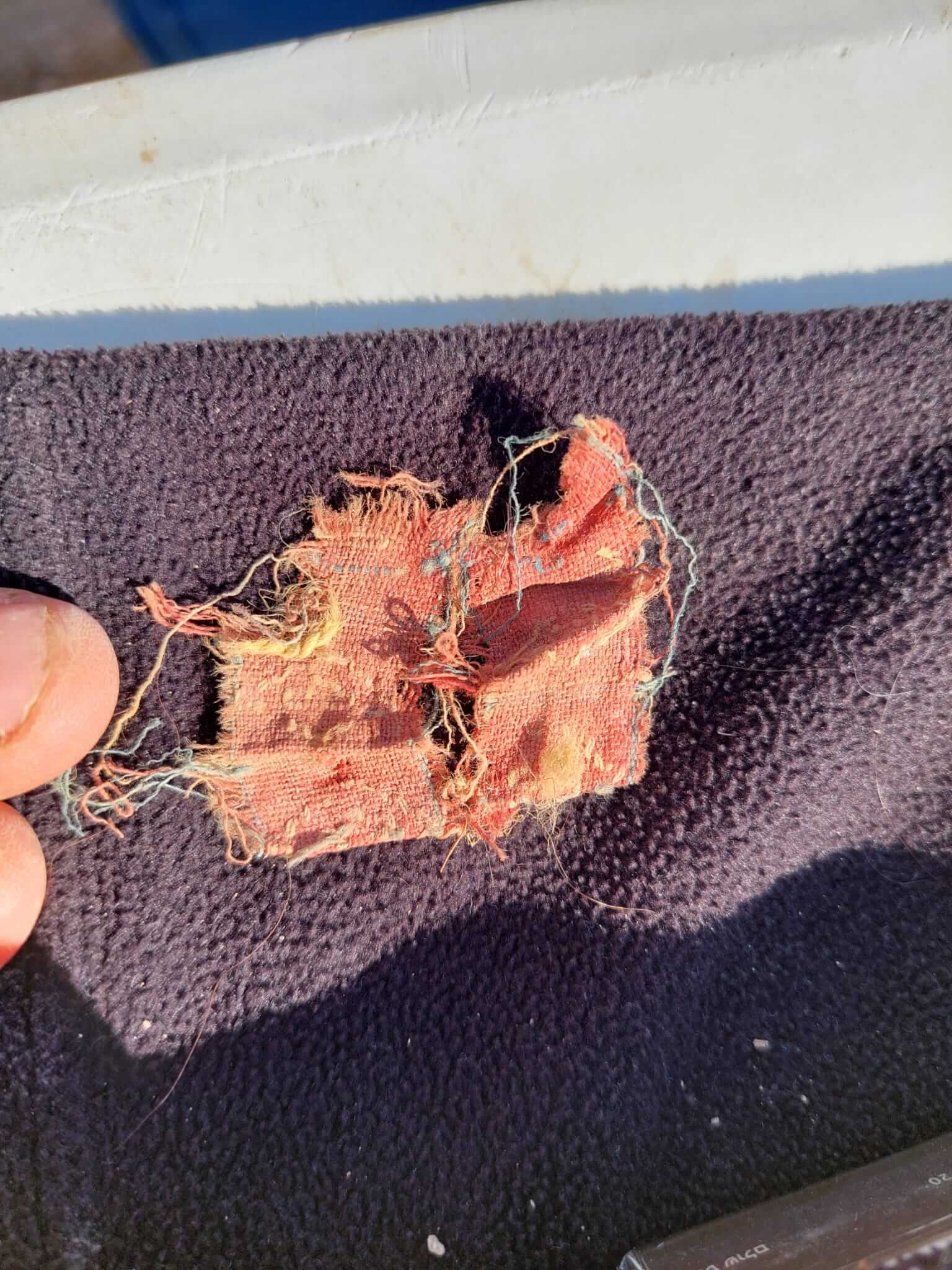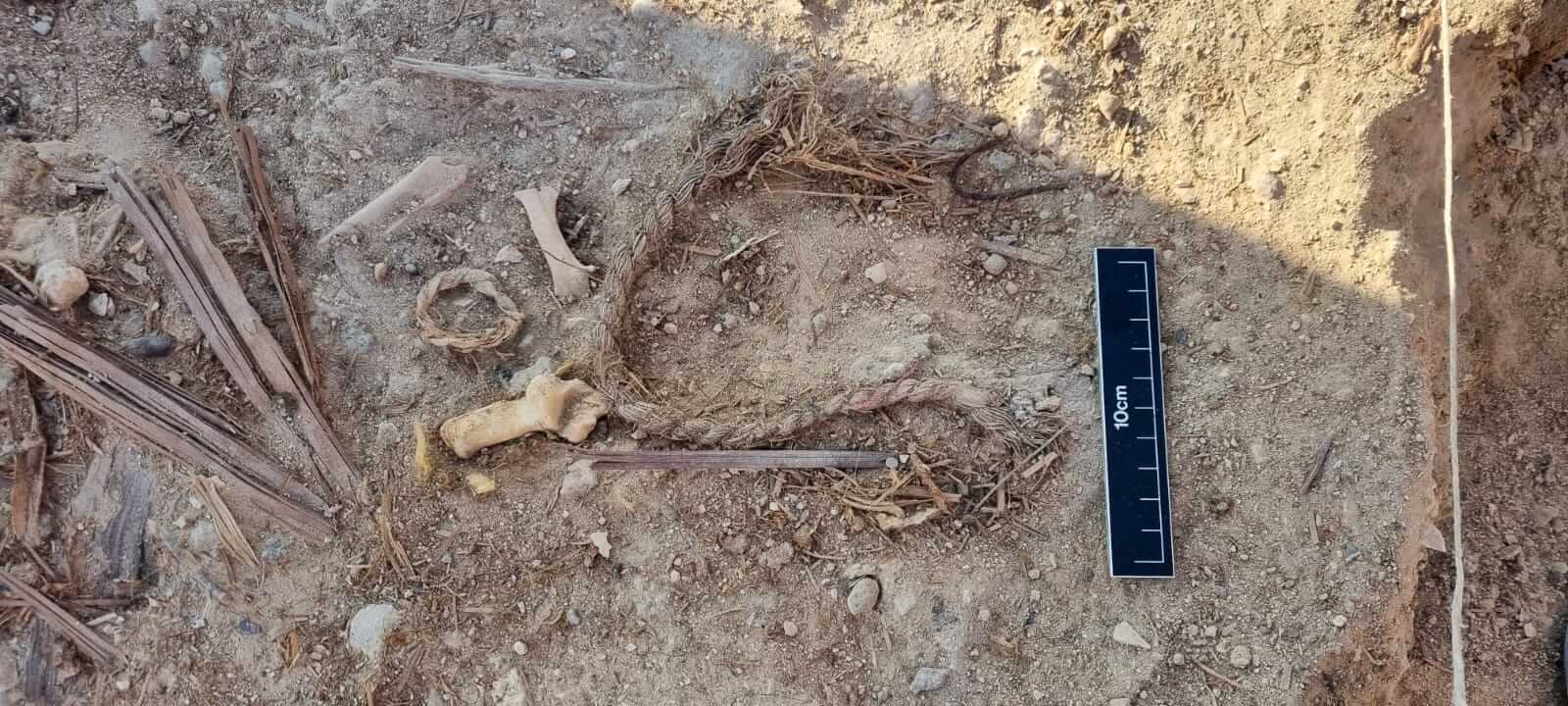Cotton fabrics and silk fabrics originating in India and China from about 1,300 years ago found in the Arabah testify to ancient trade from the Far East, through the Land of Israel and Europe

Has the Israeli "Silk Road" been discovered? In an excavation by the University of Haifa, conducted in collaboration with Dr. Roi Galili from Ben Gurion University, Dr. Orit Shamir from the Antiquities Authority, Dr. Britt Hildebrandt from the University of Göttingen in Germany and Nofer Shamir from the University of Haifa, at the Nahal Omer site in the Arava, the researchers found a wealth of artifacts imported from the East dated to the early Islamic period about 1,300 years ago. The findings include, among others, cotton and silk textiles that most likely originate from India and China.
"Our findings are apparently the first evidence that there was also an 'Israeli Silk Road' that was used by merchants on the international trade routes. This road, which diverged from the traditional road, passed from the north of Israel along the route of the Perfumers' Road, crossed the steppe and connected to the roads that crossed the Land of Israel along its length as well as to the ports of the Mediterranean," says Prof. Guy Bar Oz from the School of Archeology and Maritime Cultures at the University of Haifa, who is leading the excavation.
Globalization in the Middle East at the end of the first millennium
The Silk Road was the main overland trade route for the transfer of goods from China, through India, Egypt and the Middle East to Europe. The main routes of the road passed through Constantinople, the capital of the Byzantine Empire, which is today's Istanbul. "The models of the transportation of goods and the ranges of trade testify to the processes of globalization experienced by the Middle East at the end of the first millennium", explained Prof. Bar-Oz and Dr. Galili. "Until today, the academic discussion on the subject of ancient trade was based mainly on historical sources. The archaeological find, which allows you to touch the material, was rare." In this study, the researchers follow the changes that occurred along the timeline through the analysis of garbage accumulations of sites along the roads in order to learn about the daily life of the ancient caravan leaders and in search of the exotic materials that were transported along the way. During the research, the languages of the Nahal Omer site in the Arabah, a site from the 7th century AD, the beginning of the Islamic period in the region, were examined.
To their surprise, the researchers discovered an organic "cache" that included a wealth of findings that outline in detail the material culture and daily life of the ancient desert inhabitants: textiles, clothing items, many hygiene items - such as ear sticks and bandages - leather straps, details of belts, socks, shoe soles, combs and more . The abundance of organic items that were discovered made it possible to carry out accurate dating using carbon 14 and they were dated to the 8th-7th centuries AD. "The findings include a large number of imported materials, including textiles with typical decorative patterns originating from India and silk items from China that to this day have not yet been discovered in Israel during this period. The richness and abundance of the findings indicates the great demand for luxury products from the East," explained Dr. Shamir, a textile expert. The researchers estimate that the cotton fabrics probably came from India and Manubia (today's Sudan) - two major cotton production centers known from the period - and that the silk fabric found is significant evidence of trade originating in China.
A technological leap forward in the production of cotton fabrics

Nahal Omer is the most important in terms of textile finds of all the ancient sites discovered so far in Israel. The findings on the site show a leap forward in technological development. A large amount of cotton textiles were found on the site, some decorated with an Ikat pattern. In this technique the two are tied and dyed before weaving in a pre-prepared pattern. So far, Ikat cotton fabrics have been discovered in a small number of sites in the Middle East. On the other hand, in wall paintings in the caves of Ajanta in India, which date to the sixth century AD, figures are seen dressed in clothes decorated with patterns similar to those found in Nahal Omar.
The fabrics also provide greetings from Iran. Textiles made of white cotton and colored wool woven together in a complex weave were discovered on the site. They were used to make carpets and are still produced in a similar way in different regions of Iran and other countries in Central Asia. According to the researchers, the colors of the fabrics have been well preserved and they are decorated with a variety of colors and shapes in shades of blue color that comes from indigo, red from the colors, brown and more.
They also added that during the early Islamic period, the historic perfume route through which goods passed from southern Arabia to the Mediterranean ports during the Hellenistic and Roman periods was no longer active, and therefore they estimate that the excavation findings indicate for the first time changes in the nature of the road, its course, and the goods that passed through it in the processes of globalization. "The findings from the excavation reflect unique connections on a global scale with textile production sources in the Far East and add new information to the importance of the road in the regional and global aspect for the transfer of goods, people, technologies and ideas," said Prof. Bar Oz.
More of the topic in Hayadan:

One response
Are you confused?
The finding is interesting and important
But someone got confused in the dates and names as it is written:
This path that diverged from the traditional path has passed
From the north of Israel along the route of the perfumes road.
Not true !
The road we all know as the "perfume road" passes
near Nahal Omer and not "to the north of Israel",
The same road is known in Jordan (and Saudi Arabia) as the "Silk Road"
Because of the connection to India and China and its use is known
Since the third millennium BC,
To confirm this, the "Silk Road" which is considered "traditional"
who indeed "moved from the north of Israel"
is the way opened by G. Marco Polo in the 11th century,
In the article there was confusion between "the way of perfumes"
the ancient one that passed through our provinces
and the new and northern traditional Silk Road.
The confusion is both in terms of dating and geographically,
Too bad !